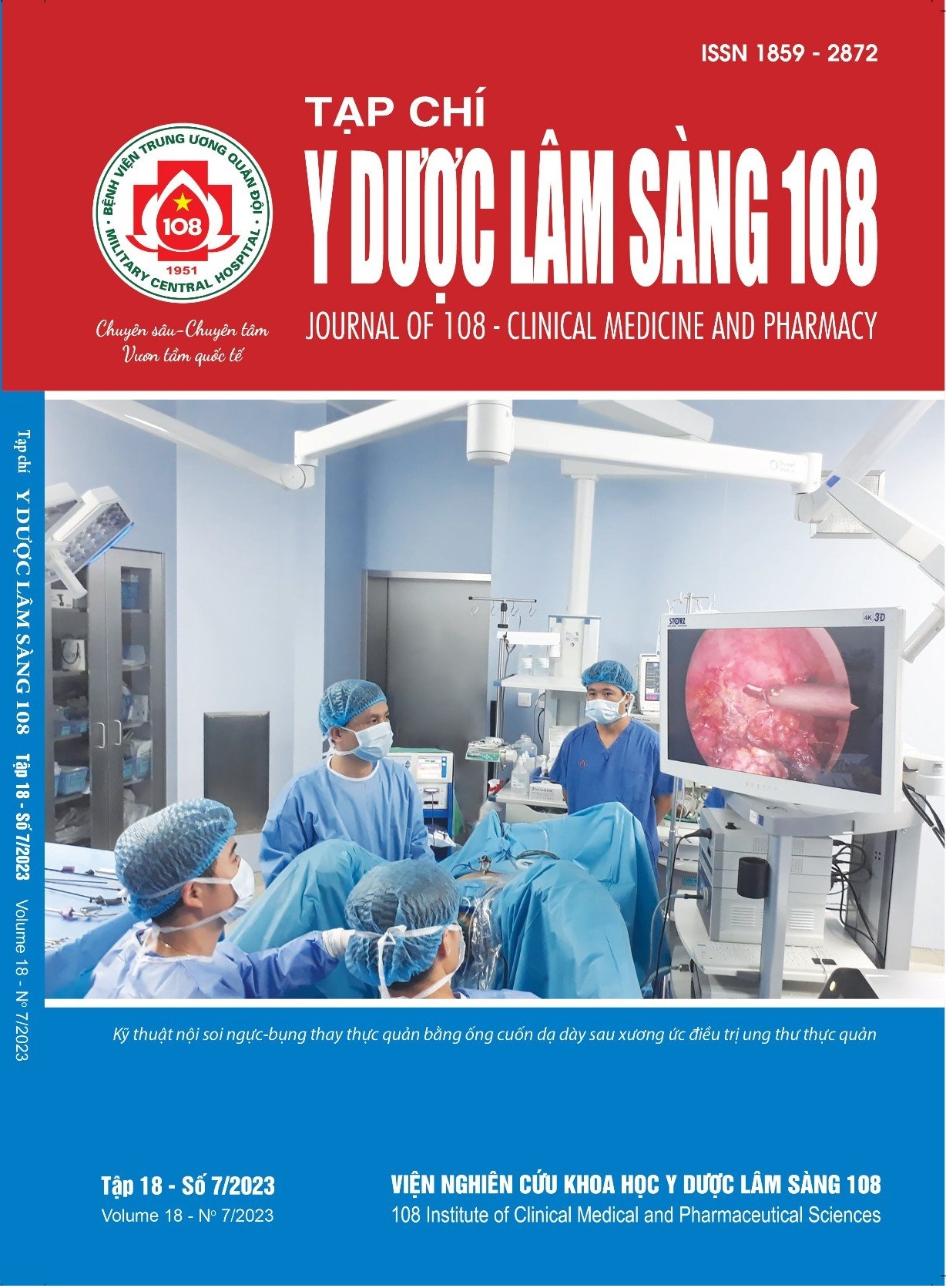Evaluation of the effects of hemostatic sponges nose first to patients at the Department of Ear, Nose and Throat, 108 Military Central Hospital
Main Article Content
Keywords
Abstract
Objective: To evaluate the effects of the procedure of placing anterior nasal hemostatic foam on patients treated at the Department of Ear, Nose and Throat, 108 Military Central Hospital. Subject and method: A prospective study, describing each case of 43 patients who had anterior nasal hemostatic foam placed at the Department of Otolaryngology, 108 Military Central Hospital from April 2021 to March 2022. Result: 78.6% of patients had insomnia, of which 38.1% could only sleep 2-3 hours, 66.7% had tears, 69% had sleep apnea, 54.8% had facial pain, 71.4% had a dry throat feeling, 42.9% had difficulty swallowing, 76.2% had fluid flow down their throat and 50% had a lump in their throat. After removing the anterior nasal bleeding sponge, the unpleasant symptoms were significantly reduced: 18.6% insomnia, 7% watery eyes, and no patient had sleep apnea or regional pain face 27.9%, dry throat 2.3%, difficulty eating and swallowing 2.3%, fluid flowing down the throat 41.9% and 4.7% of patients had a feeling of stuck in the throat. In addition, when removing the anterior nasal bleeding foam, many patients experience anxiety, a feeling of throat congestion, coughing, and choking. These symptoms were significantly reduced when carefully explained and properly coordinated. Conclusion: The procedure of saving and withdrawing the anterior nasal hemostatic foam is a procedure that brings many unpleasant symptoms to the patient. During the process of monitoring and caring for patients, nurses need to have appropriate interventions, encouragement and timely explanations to help patients feel secure in treatment and have the best treatment results.
Article Details
References
2. Lê Thị Ánh Tuyết (2019) Đánh giá bước đầu đặc điểm lâm sàng sau phẫu thuật trên người bệnh phẫu thuật nội soi mũi xoang tại Khoa Tai Mũi Họng, Bệnh viện Đại học Y Hà Nội 9 tháng đầu năm 2019. Bệnh viện Đại học Y Hà Nội.
3. Nguyễn Trọng Tài (2014) Nghiên cứu hiệu quả các biện pháp can thiệp trong điều trị chảy máu mũi. Y học thực hành 914 số 4/2014.
4. Bộ Y tế (2015) “Hướng dẫn chẩn đoán và điều trị một số bệnh về tai mũi họng” ban hành kèm theo Quyết định số 5643/QĐ-BYT ngày 31/12/2015 của Bộ Y tế.
5. Nasal packing after septoplasty (2008) A randomized comparison of packing versus no packing in 88 patients. ENT•Ear, Nose & Throat Journal. www.entjournal.com.
 ISSN: 1859 - 2872
ISSN: 1859 - 2872
